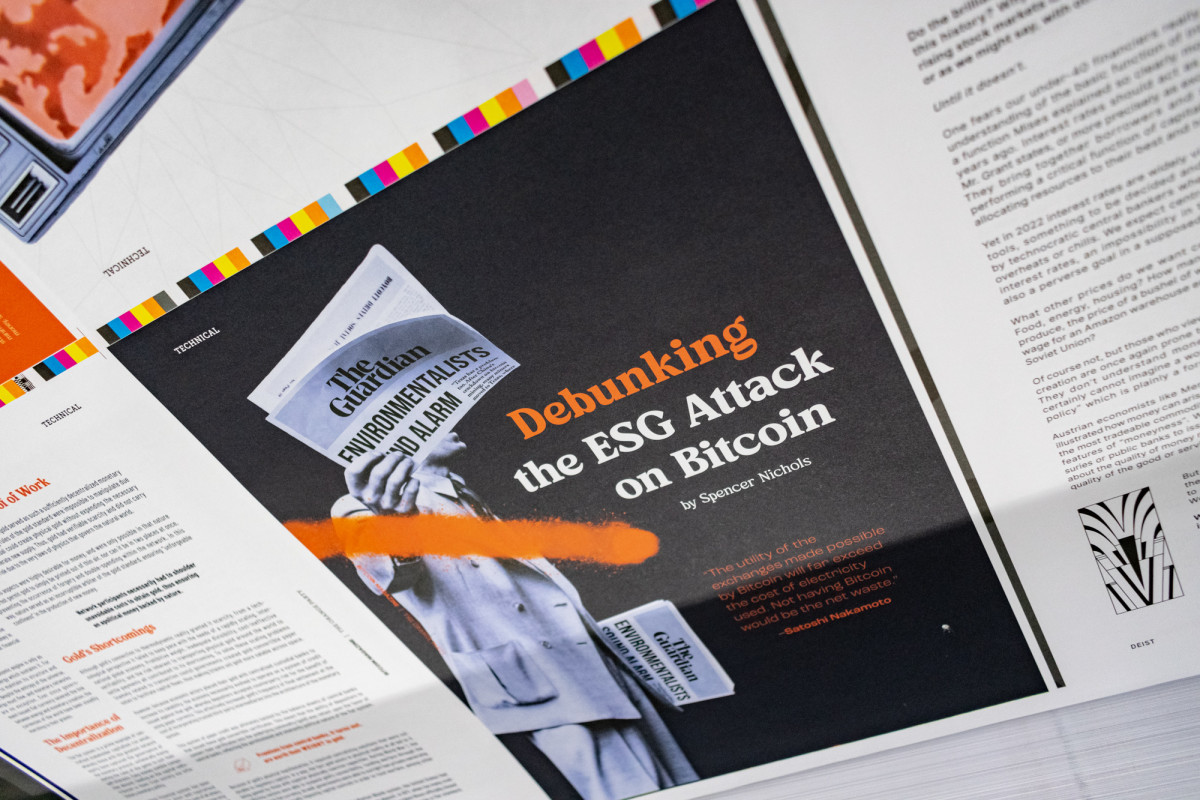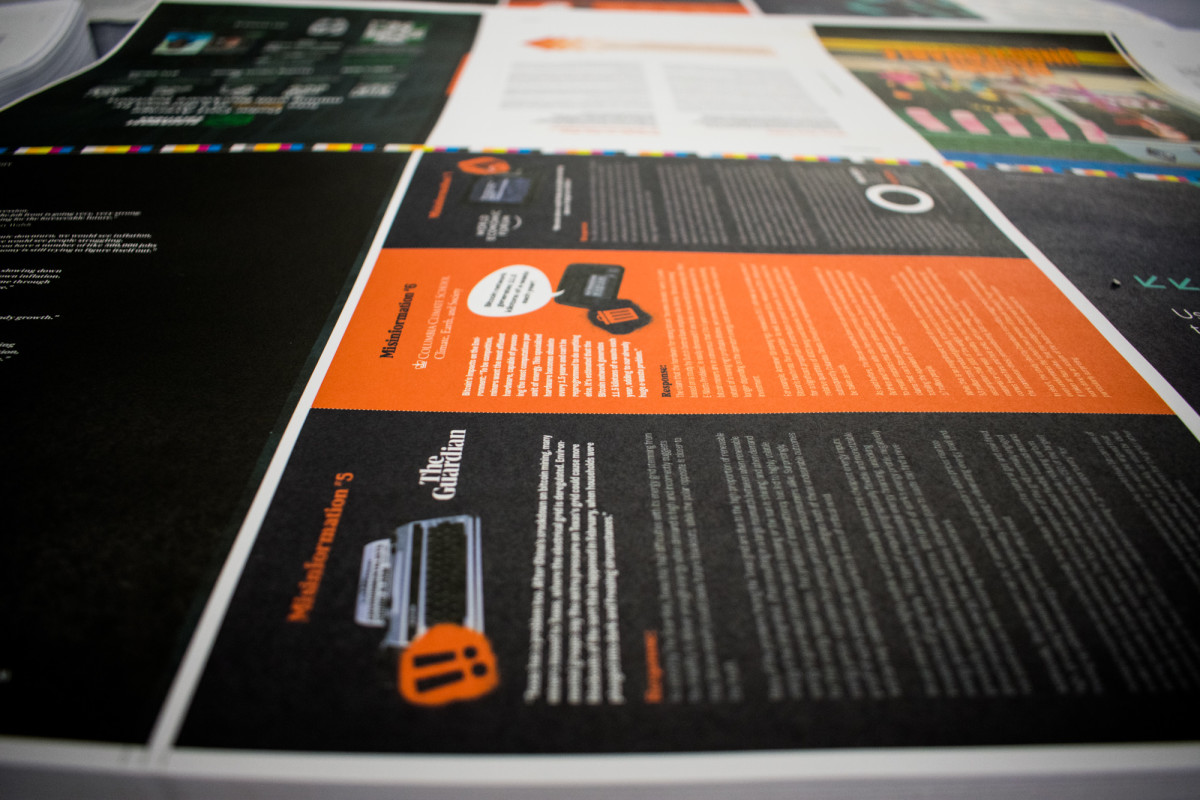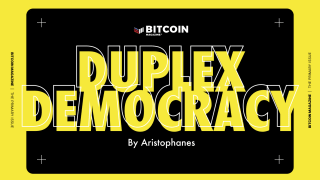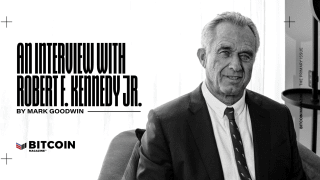This article is featured in Bitcoin Magazine's "The Orange Party Issue”. Click here to subscribe now.
A PDF pamphlet of this article is available for download.
“The utility of the exchanges made possible by Bitcoin will far exceed the cost of electricity used. Not having Bitcoin would be the net waste.” –Satoshi Nakamoto
No Free Lunch
Those who decry Bitcoin’s use of energy fail to acknowledge a simple reality: that all things in life require energy, and there is no such thing as free lunch.
Much mainstream debate has been waged on “concerns” around Bitcoin’s use of energy, yet a significant proportion of that conversation has been muddied by deep-seated myopia on the part of legacy financial interests–a type of willful blindness toward recognizing the necessity of decentralized energy money in comparison to compromised fiat financial system of today.
The fact is, any economic engine is only as good as the energy which sustains it. For a network to maintain its structure and persist despite the entropy of the universe, energy must flow, and monetary networks are no exception. Ever since government-issued fiat currency severed the link between energy and monetary creation, the currencies of the world have been steadily marching to their graves.

The Importance of Decentralization
The fiat system is a prime example of centralized stakeholder capitalism run amok, whereby those with the greatest network equity have captured the governance of the monetary protocol, unilaterally manipulating the rules of the game to suit their self-interests. Easy money zombie companies abound, feeding on the capital redistributed to them from society via inflationary monetary policy.
The modern financial system has been co-opted by the most well-capitalized network participants at the cost of all others, namely those lacking asset ownership and access to cheap debt. The centralized control of fiat presents both a single point of failure as well as a single point of control for those with the stake, granting them nearly unimpeachable access and the ability to benefit from printing money.
For any monetary protocol to avoid this fate, it must be sufficiently decentralized and resilient to coercion.
Gold: Nature’s Proof of Work
Throughout much of human history, gold served as such a sufficiently decentralized monetary protocol, where the underlying rules of the gold standard were impossible to manipulate due to the fact that no individual could create physical gold without expending the necessary energy required to generate new supply. Thus, gold had verifiable scarcity and did not carry any counterparty risk due to the very laws of physics that govern the natural world.
These two aspects were highly desirable for money, and were only possible in that nature does not permit gold to simply be printed out of thin air, nor can it be in two places at once, preventing the occurrence of forgery and double-spending within the network. In this way, nature served as an incorruptible arbiter of the gold standard, ensuring “unforgeable costliness” in the production of new money. Network participants necessarily had to shoulder unavoidable costs to obtain gold, thus ensuring an apolitical money backed by nature.
Gold’s Shortcomings
Although gold’s connection to thermodynamic reality granted it scarcity, from a technological perspective it failed to keep pace with the needs of a rapidly scaling, international global economy. Prohibitive weight, inadequate divisibility, cost-ineffective verifiability, and the risk inherent to transporting physical gold around the world to settle payments all contributed to its shortcoming. To solve these scaling problems (namely related to transaction costs) governments created gold-convertible paper notes to facilitate capital flows, thus making (claims on) gold more salable across space.
However, because economic actors placed their gold with centralized custodial banks to increase its salability, the economy necessarily evolved to operate on a system of credit issued against that gold, whereby depositors accepted counterparty risk for the benefit of using paper currency. This effectively increased gold’s frequency of final settlement at the cost of incorporating trusted third-party intermediaries into the architecture of the monetary system.
This system of paper credit was ultimately backed by the balance sheets of central banks that issued these gold-convertible certificates. This meant that the ability of depositors to convert their certificates into the underlying commodity (gold) was reliant upon the favor of central banks, reflecting the permissioned and inherently political nature of the fiat system.
Promises from central banks, it turns out, are worth their weight in gold.
Because of gold’s physical manifestation, it required centralizing solutions that were vulnerable to regulatory capture. In a way, the fact gold exists in physical reality at all led to it being gamed by those with superior physically coercive capacities. During World War One, the conflicting nations were able to suspend gold’s convertibility, funding warfare through the ability to print fiat currency. As well, governments were able to outright ban private ownership of gold while unilaterally imposing capital controls in order to fund warfare, among other government programs.
At the conclusion of the gold standard and the Bretton Woods system, the United States had issued dollar liabilities far in excess of its gold reserves on deposit. In 1971, when too many creditors came calling (namely France and the United Kingdom), US President Nixon officially closed the gold window by disallowing gold’s convertibility, bringing the world onto a fiat standard.
Why Fiat Fails
The necessary, and seemingly foregone outcome of government-monopolized money has delivered some particularly nasty unintended consequences. Those able to issue new currency gained the ability to paper over their bad debts, enriching themselves by socializing their losses at the expense of the broader economy.
Traditionally, this regulatory capture benefited governments and entities benefiting from government-granted monopolies, allowing them to accumulate greater and greater stake in the US dollar network. As well, the United States, as the issuer of the world reserve currency, maintains the ability to impose seigniorage whereas the rest of the world operating on the US dollar standard does not have this so-called exorbitant privilege.
Government-monopolized money has consistently generated unsustainable government debt as those with access to the printing press maintain the ability to inflate their obligations away. To debase is in fact an obligation of a state in competition for power with other states, and would otherwise render losers those unable to debase their currency during times of emergency or war.
As the process of ever-increasing government debt and compounding interest accumulation reduces growth, even more debasement is required to further kick the can down the road. All the while, unsound debts are increasingly papered over and forgiven. As a higher and higher proportion of unproductive capital circulates within the financial system, productivity falls and requires even more credit expansion for the system to function in a pernicious inflationary spiral.
Fiat currency, which emerged as an expedient yet centralized way to solve gold’s technological shortcomings, metastasized into an unsustainable systematic destruction of capital, its lifetime limited by the degree to which the state can coerce its citizens to participate in an inherently one-sided economic game.
Energy is the Key to Decentralization
Bitcoin’s proof-of-work is the only way to achieve immutable decentralized consensus for digital money, a domain characterized by adversarial game theoretic conditions; the famous Byzantine General’s Problem that Satoshi set out to solve.
Proof-of-work incontrovertibly requires energy to be expended to mine new coins, and energy carries a necessary, real-world physical cost. This imposition of “unforgeable costliness” (cred. Nick Szabo) bonds digital money creation to energy expenditure, introducing the first law of thermodynamics into the architecture of a digital monetary system.
Energy expenditure serves as the necessary check and balance in the process of decentralized monetary consensus and cannot be replaced. Energy’s inability to be forged by any known means minimizes the trust that individuals must place in one another, allowing immutable code to serve as law in the adversarial game that is money.
Porting unforgeable energy into the digital realm enabled the creation of the first absolutely scarce monetary good, granting humanity the capacity to provably value its collective future free from the monetary debasement implicit of captured, self-destructing, debt-based fiat currencies. Bitcoin’s use of energy now supports anyone, anywhere, to store value free from the yolk of central banking time theft, powering a monetary system no longer predicated upon harvesting future productive capital to sustain itself.
The beauty of Bitcoin’s proof-of-work is that the “opinions” of those who would wish to harm it bear no impact on the network’s truthful and uncensorable depiction of the ledger. The Bitcoin network’s energy-enabled decentralization guarantees it will continue to thrive, and we will all be better for it.

Misinformation #1
The World Economic Forum
“Bitcoin alone could help push global warming above two degrees Celsius”
Response:
This claim is perhaps the most egregious and often-cited misleading piece of FUD bandied about by the media. The World Economic Forum (WEF) is infamous for its disdain for bitcoin, and perhaps this makes sense given its close ties to central bankers and the cantillionaires who benefit from the control of the monetary system. Politics aside, the WEF and its acolytes would be well-served to take a closer look at the “science” they purport as truth when, as even a cursory glance at their cited material, Nature Climate Change, suggests their claim has no basis in reality.
The WEF continues to cite a barely two-page comment published in the aforementioned journal by Mora et al. (2018). This comment has since been debunked three separate times in the very journal in which it was published, a much better reflection of “the science” at hand. These readily-visible responses appear directly above the material cited by WEF, yet coincidentally find no mention by those with “concerns” about Bitcoin’s energy use. A curious case of selective blindness, perhaps?
The Mora comment, as well as being completely unrepresentative of reality, was written by a group of undergraduate students as an exercise to understand the academic publishing process. This level of academic inquiry should have no place in the public discourse and suggests that those with an ax to grind against Bitcoin don’t necessarily care to “follow the science”. If they did, they might have actually read responses like “Implausible projections overestimate near-term Bitcoin CO2 emissions” (Masanet et al., 2019) which roundly debunks the model used by Mora and makes clear the many orders of magnitude by which Mora’s erroneous assumptions miss the mark.
2°C. To claim outright that Bitcoin alone, which is responsible for only 0.085% (8.65 ten-thousandths) of global carbon emissions, could be solely responsible for 2°C of warming is patently ridiculous, mathematically illiterate and borderline misanthropic. More ridiculous yet is the idea that the WEF is approaching Bitcoin with even a modicum of objectivity when they clearly have no interest in contrary evidence presented in direct opposition to their narrative within the very journal they purport as “the science”. As the WEF continues to make this false assertion, know that it is not done out of concern for “the climate” nor is it tied to an objective assessment of reality. Rather, it is done out of concern that those who previously controlled the global monetary order recognize this and are using all means available to maintain control, with public disinformation being a key attack vector.
Misinformation #2
Greenpeace
“Change the code, not the climate: A software code change would reduce Bitcoin’s energy use by 99.9%. Switching to a low-energy protocol has proven effective and uses a fraction of the energy. Ethereum is changing its code. Many others use less energy. Why isn’t Bitcoin?”
Response:
In a recent Greenpeace campaign sponsored by billionaire Chris Larsen (co-founder of Ripple Labs, the company behind the centralized cryptocurrency XRP), the environmental non-profit has gone on the offensive against Bitcoin, alleging its energy use could be virtually eliminated with one simple change. Never mind their laughable citation of Mora et al (2018) or the fact that Ripple is trying to position its provenant (centralized) cryptocurrency as a low-energy “sustainable” alternative to Bitcoin’s proof-of-work. Instead, let’s focus on Greenpeace’s malinformed perspective; that Bitcoin can simply switch to a different consensus mechanism and voila–problem solved.
Greenpeace and Larsen claim that “Many newer cryptocurrencies are low consumers of energy or carbon-neutral because they use a better model; proof-of-stake”, fallaciously equating proof-of stake and proof-of-work in terms of their security attributes. This dishonestly implies that Bitcoin’s imposed energy demands are unnecessary and inherently wasteful when “better” systems exist.
Fundamentally, proof-of-stake consensus is a self-centralizing security model and thus cannot serve as an alternative to proof-of-work in a domain as adversarial as money. Stake-based systems forego the need for energy expenditure to establish the state of the network and instead delegate validation as a responsibility of the network’s largest stakeholders. Over time, this means that as those with more stake increase their network equity through block validation, they recursively solidify their control over the network.
Simply, the network participants with the most stake dictate the state of the network and this inherently introduces counterparty risk into the system. This is essentially the same security model the fiat system operates upon, where the largest participants can undermine the monetary system due to their wealth, and typical network participants must accept the counterparty risk inherent in holding any money that does not effectively minimize trust. This is nowhere even close to the realization of apolitical money that Bitcoin set out to achieve, and in no sense provides a substitute for proof-of-work despite the opinions of Chris Larsen and Greenpeace on the matter.
Bitcoin, by requiring proven energy expenditure, imposes unforgeable costliness onto the network participants, such that miners are incentivized to accurately record the state of the ledger while being incentivized to respect the rules of the protocol. Trust minimization between network participants is an irreplaceable quality of decentralized money, and energy is an incontrovertibly necessary ingredient to achieve that aim.
Misinformation #3
The New Yorker
“Why Bitcoin is Bad for the Environment: A single bitcoin transaction uses the same amount of power that the average American household consumes in a month, and is responsible for roughly a million times more carbon emissions than a single Visa transaction.”
Response:
Comparing the Visa network; a permissioned higher-layer protocol facilitating credit transactions atop the fiat system, to Bitcoin; a permissionless base-layer money achieving irreversible final settlement, is like saying that an IOU and cash-in-the-hand offer the same settlement assurance. Bitcoin’s trust-minimization is not remotely equivalent to Visa, highlighting a critical lack of understanding of what Bitcoin was designed to accomplish.
Inequivalence aside, the quantity of transactions in a Bitcoin block has no bearing on the energy intensity of that block. Mining not only secures newly submitted blocks but secures all previously mined blocks that came before. Bitcoin’s use of energy, rather than processing individual transactions, goes toward making the Bitcoin ledger increasingly immutable with each additional hash. Nearly the same amount of energy would be required for a given block even if zero transactions were contained within it.
This misattribution of energy expenditure also fails to account for higher-layer protocols like the Lightning Network, which can bundle many transactions into a single on-chain entry, massively reducing the (meaningless) expected “energy-per-transaction” cited by the New Yorker. Currently, the vast majority of miner revenue is not even derived from transactions, as transaction fees account for only 2% of the reward granted to miners.
In the interest of valid comparisons, it is important to highlight the relationship between the fiat monetary system and its energy use. Shortly after the fall of the gold standard, 1974 saw the birth of the petrodollar system via an alliance between the United States and Saudi Arabia. The US military-industrial complex would provide military security for Saudi Arabia and in exchange, the oil-producing nation agreed to transact oil solely in dollars. These petrodollars held in reserve would then be ‘recycled’ into US Treasuries, thereby establishing consistent demand for US government debt.
While Bitcoin does not litigate the ethics of hydrocarbon production, it is not controversial to point out that the dollar, in that it is sustained by the continuation of the US military-industrial complex (the single largest consumer of oil in the world), carries an incomparably greater carbon footprint than the Bitcoin network will ever begin to approach. All this, while generating abhorrent negative externalities, among which are the countless lives lost to conflict and the inherently political nature of money controlled by a singular geopolitical hegemon.
Misinformation #4
NRDC
“In comparison with more traditional online banking, a single bitcoin has the same carbon footprint as 330,000 credit card transactions. Given the world’s exceedingly tight timeline to reach net-zero emissions and avoid a climate catastrophe, the [Bitcoin] boom poses a big problem.”
Response:
Again, more unfounded, uncontextualized fear-mongering coupled with an invalid comparison of Bitcoin, a network for trustless final settlement and peer-to-peer value exchange, with credit transactions facilitated by intermediaries atop the fiat system. According to the Bitcoin Mining Council, an industry organization accounting for more than half of the global hash rate, the Bitcoin network accounts for only 0.15% of global energy use and .086% of global CO2 emissions, an indisputably insignificant energy demand profile. The fact is, other monetary goods are incredibly carbon intensive in comparison. Real estate, which carries a monetary premium far above its use value, accounts for 40% of global emissions and drives significant social externalities including exacerbating the global cost of living crisis and problems.
While it is true that Bitcoin does use energy, and that this energy load carries resultant emissions, a closer look at the kind and quality of energy being used is warranted. Globally, the Bitcoin network uses 59.5% renewable energy, a higher proportion than any other industrial process, let alone a higher proportion than any country in the world. Given these facts, short-sighted, alarmist concern-trolling by the NRDC serves no practical purpose in the discourse around climate change given Bitcoin has a decidedly undersized climate impact relative to its already inconsequential energy demands. The “boom” in Bitcoin mining poses less of a so-called climate “problem” than virtually any industry. Contrary to the NRDC’s framework, Bitcoin is helping to drive the acceleration of renewable energy solutions.
Misinformation #5
The Guardian
“Texas has a problem too. After China’s crackdown on bitcoin mining, many miners moved to Texas, where the electrical grid is deregulated. Environmental groups say the extra pressure on Texas’s grid could cause more blackouts of the sort that happened in February, when households were plunged into dark and freezing circumstances.”
Response:
As noted by The Guardian, Texas has had difficulties with its energy grid stemming from the inability to deliver enough energy when demand is high and incorrectly suggests that Bitcoin miners could cause future blackouts, while the polar opposite is closer to the truth.
Many of the problems facing the Texas grid are due to the high proportion of renewable energy it has integrated, often resulting in a large mismatch between when renewable energy is generated (when the wind is blowing or the sun is shining) and when demand for that energy materializes. This problem of intermittency has led to highly volatile energy prices–a problem for energy producers and consumers alike. Surprisingly, proof-of-work presents an opportunity to mitigate both of these undesirable outcomes and can help stabilize energy markets in times of critical need.
Bitcoin miners are highly mobile and continually seek out the cheapest energy inputs irrespective of geography. This type of uniquely geographically flexible and monetizable energy demand offers a critical avenue for renewable energy financing, unlocking previously unavailable financing options. With proof-of-work’s energy profile, negatively priced renewable energy that would have otherwise gone to waste can find a revenue-positive use while securing the Bitcoin network.
Additionally, Bitcoin miners can be of service to grid operators when prices rise too high, providing demand response functionality (reducing or eliminating energy load) and freeing up additional energy in times of critical need.
Demand response can coincidentally help reduce the need for natural gas and coal-fired peaker plants (a carbon-intensive and costly component of the grid) normally engaged during periods of peak demand. This type of market-enabled flexible baseload demand can help drive energy security and infrastructure resilience while reducing carbon emissions in the process. This capability has even been noted by the CEO of the largest grid operator in Texas (ERCOT) who called bitcoin mining a “great opportunity” for the grid.
Categorically, there is no alternative industrial process in the world than bitcoin’s use of proof-of-work capable of fulfilling such an important niche. It can even be argued that Bitcoin does not use enough energy to help stabilize the grid as quickly as would be ideal. All this considered, proof-of-work turns out to be a powerful solution for the grid rather than the “problem” for Texans The Guardian might have you believe.
Misinformation #6
Columbia Climate School
Bitcoin’s Impacts on the Environment: “To be competitive, miners want the most efficient hardware, capable of processing the most computations per unit of energy. This specialized hardware becomes obsolete every 1.5 years and can’t be reprogrammed to do anything else. It’s estimated that the Bitcoin network generates 11.5 kilotons of e-waste each year, adding to our already huge e-waste problem.”
Response:
The claim that the hardware for mining bitcoin “becomes obsolete” every 1.5 years, based on the study by Dutch Central Bank employee Alex DeVries “Bitcoin’s Growing E-Waste Problem”, is easily dismissed if one looks at real-world bitcoin mining data. Most bitcoin miners are in consensus that three to five years is a reasonable expectation for the extent of a mining rig’s profitable lifetime, yet some miners may continue functioning longer depending on the operator’s energy costs and tolerance for relative return on investment.
For example, Antminer S9 mining rigs, released in 2017, still make up a notable portion of Bitcoin’s hash rate five years later. As well, Antminer S15s, released in 2018, still account for a significant proportion of contribution to proof-of-work. Even a cursory look at the relative quantities of ASICs being used debunks the assumptions used by DeVries (and subsequently Columbia Climate School) are not representative of reality and should not be taken as such.
As said before, the Bitcoin network does not use energy on a per-transaction basis, yet DeVries and those who cite him continue to rely upon this misleading metric in order to create statistics that appear critical of Bitcoin. Even so, the aforementioned quote claims that each Bitcoin transaction somehow creates an iPhone’s worth of e-waste, totaling the equivalent of the “small IT” sector of the Netherlands, a country of 17 million people.
While this is an insignificant amount of e-waste, a mere drop in the bucket of the 53 million tons produced globally, it turns out to be massively overestimated on the assumption that 100% of the weight of each rig is indeed e-waste, rather than recyclable material or otherwise. In reality, the vast majority of the material within mining rigs comes from fans and heat sinks, with just milligrams of legitimate e-waste coming from the (nanometer-thick) semiconducting ASIC chips themselves.
In short, the study cited by Columbia is incredibly exaggerated, decontextualized and even undermines the school’s own premise of Bitcoin having a “huge e-waste problem” if taken at face value. That this unobjective attack was levied based upon work done by an acolyte of the Dutch Central Bank should not be particularly surprising.
As the limited lifespan of fiat currencies comes to a close, Bitcoin has emerged to take its place in re-connecting money to energy and restoring a sound foundation to global economic exchange. Inventor, scientist and environmentalist R. Buckminster Fuller may have put it best when he described the importance of global money once again coupled to thermodynamic reality in his book Critical Path (1981):
"In this cosmically uniform, common energy-value system for all humanity, costing will be expressed in kilowatt hours, watt-hours, and watt-seconds of work. Kilowatt-hours will become the prime criteria of costing the production of the complex of metabolic involvements per each function or item. These uniform energy valuations will replace all the world's wildly intervarying, opinion-gambled-upon, top-power=system-manipulatable monetary systems. The time-energy world accounting system will do away with all the inequities now occurring in regard to the arbitrarily maneuverable banker-invented, international balance-of-trade accounting".
Prescient indeed. Unstoppable energy money is finally here, and every watt used to secure the network from centralized control of the monetary system should be celebrated. The energy FUD is barking up the wrong tree and ironically happens to have found the sustainable monetary system they were looking for all along.











